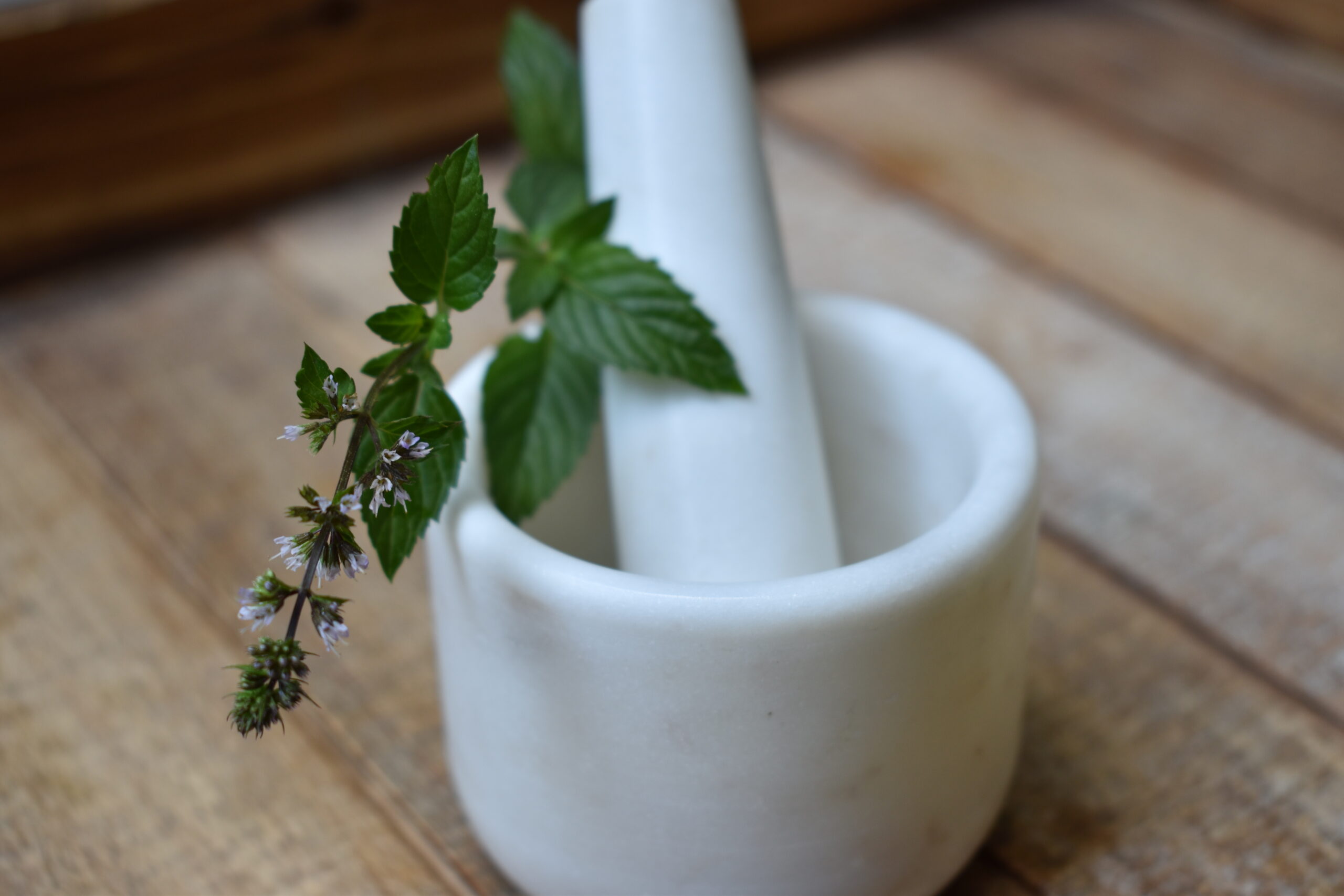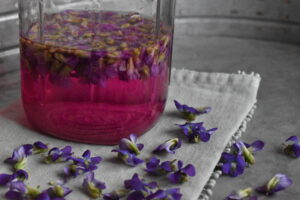Links contained in this post and elsewhere on my website may include affiliate links. When you make a purchase through these links, I earn a commission at no additional cost to you. I only link to products and services that I love - and that I think you will love, too!
When learning about an herbal approach for fevers, you’ll find several unusual terms as you study. This includes herbal febrifuges, antipyretics, and diaphoretics.
Febrifuge and antipyretic are two technical terms for substances that reduce fever. In herbal language, the terms come from the U.S. Pharmacopeia, which originally contained many herbal ingredients.
There is another category of herbal action that I find is much more useful when discussing fever. This would be diaphoretics: substances that promote perspiration. I feel like it gives a better indication of how the herbs interact with the human body than either of the first two.
Febrifuge and antipyretic assume that the fever is being acted upon. Diaphoretics indicate that the herb promotes diaphoresis (sweating). This places the herbal action within the realm of individual balance and views the fever as a state of imbalance that the body is experiencing.
In traditional Chinese herbalism, though, antipyretics are a separate class of herbs. They are indicated when a fever is extremely high and has gone unchecked for quite some time. For our purposes today, we will look strictly at diaphoretics. First, though, let’s look at what a fever is, what causes it, and why it’s not necessarily a bad thing.
An herbal approach to fever
A fever is higher than normal body temperature. Temperature can vary slightly based on time of day and some other factors, so being a little higher or lower than the “normal” 98.6F usually isn’t a reason to be concerned. Body temperature is regulated in a part of the brain called the hypothalamus.
Most people are familiar with fevers that are part of the body’s response to bacterial or viral infections- raising the temperature helps make the body less hospitable to pathogens and helps with the immune response. But fevers can also occur for other reasons:
- Sunburn
- Heatstroke
- Illegal drugs
- Alcohol withdrawal
- Tumors
- Prescription medications
- Vaccines
- Inflammatory/autoimmune diseases like rheumatoid arthritis or lupus
So, to summarize: if your fever is part of a cold or flu or mild infection it’s not necessarily a bad thing. However, if someone has a fever that seems unusual for any reason or a high fever, they need to visit a medical professional if one is available. Learn more about Basic Fever First Aid in this article.
Understanding herbal diaphoretics
A diaphoretic is a substance that promotes perspiration. They have an important place in the traditional herbal approach to fever.
This is a fairly large category of herbs. Many, but not all, herbs with diaphoretic action belong to the mint family. Peppermint, lemon balm, catnip, basil, and sage are all mint-family diaphoretics. Outside of the mint clan, ginger, chrysanthemum, chamomile, and elderflower provide a few more examples.
There are technically two types of diaphoretics: those that help produce sweat by stimulating circulation, and those that allow sweating to take place by relieving surface tension of the nerves and pores in the skin. Herbalists like to refer to these as “Warming” and “Cooling” diaphoretics, respectively, although the main difference is that the first type tend to cause a more powerful sweat on their own than the second. Both can be paired with a warm bath or layers of blankets to give an added boost to body temp and sweat-assist.
Some herbs will promote an obvious sweat while others work more in the background, but don’t expect to gush buckets of sweat.
Examples of warming diaphoretics include
- angelica (angelica archangelica)
- hyssop (Hyssopus officinalis)
- sage (Salvia officinalis)
- thyme (Thymus vulgaris)
- ginger (Zingiber officinale)
Cooling diaphoretics include
- peppermint (Mentha x piperita)
- lemon balm (Melissa officinalis)
- catnip (Nepeta cataria)
- elderflower (Sambucus nigra)
- chamomile (Matricaria chamomilla)
There are a few safety precautions with some of the warming diaphoretics. Angelica, although it is a wonderful herb with many uses, should be used with caution for anyone with blood sugar problems, as it has a tendency to raise blood sugar levels in some individuals. In that case, plain ginger tea may be best. Also, sage should be avoided during pregnancy- again, ginger is usually a safe alternative.
How to choose an appropriate herb
Herbalists look at what is going on with the individual to decide whether to use a warming or a cooling diaphoretic. Here are some clues to help you better match up the right plant for your situation:
If a person is experiencing any of these states, chances are good that are warming herb is a good match:
- a mild fever with chills
- a fear of cold
- body aches and pains
- a lack of sweating
- is not thirsty
Someone who is experiencing these states may respond best to a cooling herb:
- high fever
- mostly feels hot (but may still have a few mild chills now and then)
- may have a headache
- is very thirsty
If there are children in the house, it can be useful to know that they typically “run hot,” so they are more likely to respond well to cooling diaphoretics. Catnip, lemon balm, and peppermint are especially kid friendly because of their more palatable tastes.
A middle ground herb
There’s one more important diaphoretic herb to mention before we wrap up. Yarrow is another well-known diaphoretic herb, but it’s not really hot or cold. This herb is neutral, so it’s applicable regardless of whether a warming action or a cooling action might be more beneficial.
Yarrow is useful alone or combined either with angelica 1:1 to create a warming diaphoretic tea, or equal parts elderflower and peppermint to make a cooling diaphoretic tea.
Hopefully, now you have a more complete picture of this category of herbs; the times they are traditionally appropriate; and how to choose between warming and cooling diaphoretics.
Recipe for an herbal approach to fever
The Herbal Academy has a free recipe for herbal tea that contains common herbal diaphoretics over on their blog (#affiliate). It’s a good recipe to keep on hand if you want a natural way to stay more comfortable while your body fights off a fever. The recipe calls for catnip, elder, yarrow, and peppermint. I’ve added my affiliate links below so you can easily order the ingredients from Mountain Rose Herbs.
Updated October 8, 2021





